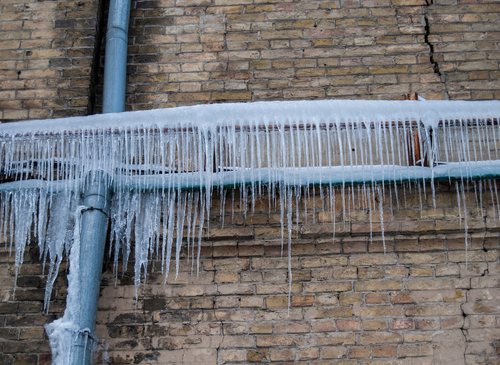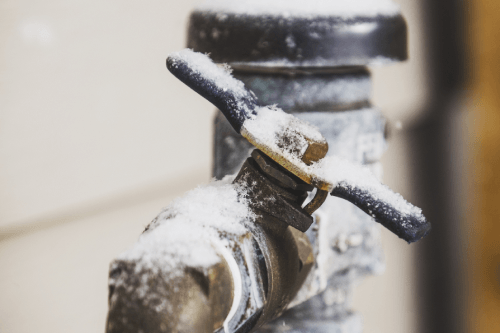Important Advice for Avoiding Frozen Pipes in Cold Weather Seasons
Try HereNearly everybody has got his or her own opinion about How to prepare your home plumbing for winter weather.

Winter can ruin your pipes, especially by freezing pipes. Below's exactly how to avoid it from happening and what to do if it does.
Intro
As temperature levels drop, the threat of icy pipes rises, potentially causing pricey fixings and water damages. Recognizing just how to avoid icy pipelines is critical for property owners in cold environments.
Prevention Tips
Insulating vulnerable pipes
Wrap pipes in insulation sleeves or use warmth tape to shield them from freezing temperatures. Concentrate on pipelines in unheated or exterior locations of the home.
Home heating techniques
Maintain indoor rooms sufficiently warmed, especially areas with plumbing. Open cupboard doors to permit warm air to circulate around pipelines under sinks.
How to recognize frozen pipes
Look for lowered water circulation from faucets, uncommon smells or sounds from pipelines, and noticeable frost on subjected pipelines.
Long-Term Solutions
Architectural adjustments
Consider rerouting pipes far from outside wall surfaces or unheated locations. Add extra insulation to attic rooms, basements, and crawl spaces.
Updating insulation
Invest in high-quality insulation for pipelines, attic rooms, and wall surfaces. Correct insulation aids maintain consistent temperatures and minimizes the risk of icy pipelines.
Safeguarding Outside Pipes
Yard hoses and outdoor faucets
Separate and drain yard hose pipes prior to winter. Mount frost-proof spigots or cover exterior faucets with insulated caps.
Recognizing Icy Pipes
What creates pipelines to freeze?
Pipelines freeze when exposed to temperatures below 32 ° F (0 ° C) for extended periods. As water inside the pipes ices up, it increases, taxing the pipeline walls and possibly causing them to break.
Risks and problems
Frozen pipes can lead to water supply disturbances, property damages, and pricey repair work. Burst pipes can flooding homes and create comprehensive architectural damage.
Signs of Frozen Pipeline
Recognizing icy pipelines early can prevent them from breaking.
What to Do If Your Pipes Freeze
Immediate activities to take
If you think frozen pipelines, maintain taps available to relieve pressure as the ice melts. Use a hairdryer or towels taken in hot water to thaw pipelines gradually.
Final thought
Stopping icy pipelines calls for proactive actions and quick actions. By recognizing the reasons, indications, and preventive measures, home owners can shield their plumbing during cold weather.
5 Ways to Prevent Frozen Pipes
Drain Outdoor Faucets and Disconnect Hoses
First, close the shut-off valve that controls the flow of water in the pipe to your outdoor faucet. Then, head outside to disconnect and drain your hose and open the outdoor faucet to allow the water to completely drain out of the line. Turn off the faucet when done. Finally, head back to the shut-off valve and drain the remaining water inside the pipe into a bucket or container. Additionally, if you have a home irrigation system, you should consider hiring an expert to clear the system of water each year.
Insulate Pipes
One of the best and most cost-effective methods for preventing frozen water pipes is to wrap your pipes with insulation. This is especially important for areas in your home that aren’t exposed to heat, such as an attic. We suggest using foam sleeves, which can typically be found at your local hardware store.
Keep Heat Running at 65
Your pipes are located inside your walls, and the temperature there is much colder than the rest of the house. To prevent your pipes from freezing, The Insurance Information Institute suggests that you keep your home heated to at least 65 degrees, even when traveling. You may want to invest in smart devices that can keep an eye on the temperature in your home while you’re away.
Leave Water Dripping
Moving water — even a small trickle — can prevent ice from forming inside your pipes. When freezing temps are imminent, start a drip of water from all faucets that serve exposed pipes. Leaving a few faucets running will also help relieve pressure inside the pipes and help prevent a rupture if the water inside freezes.
Open Cupboard Doors
Warm your kitchen and bathroom pipes by opening cupboards and vanities. You should also leave your interior doors ajar to help warm air circulate evenly throughout your home.

As a fervent reader on Winter Plumbing Precautions: Preventing Frozen Pipes, I figured sharing that short article was appropriate. Loved our article? Please quickly share it. Let someone else check it out. We appreciate reading our article about Preventing and dealing with frozen pipes.
Click Here